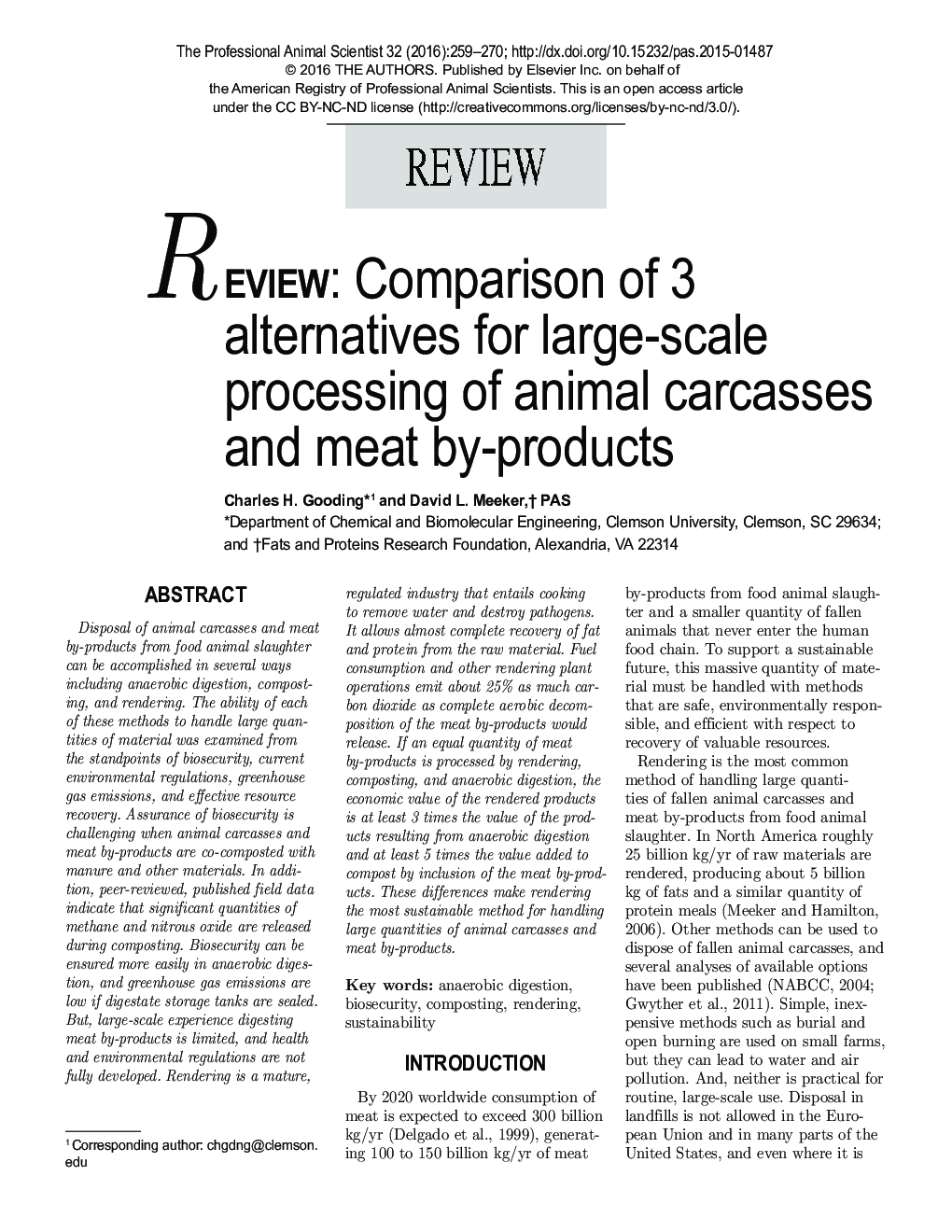| Article ID | Journal | Published Year | Pages | File Type |
|---|---|---|---|---|
| 10161698 | The Professional Animal Scientist | 2016 | 12 Pages |
Abstract
Disposal of animal carcasses and meat by-products from food animal slaughter can be accomplished in several ways including anaerobic digestion, composting, and rendering. The ability of each of these methods to handle large quantities of material was examined from the standpoints of biosecurity, current environmental regulations, greenhouse gas emissions, and effective resource recovery. Assurance of biosecurity is challenging when animal carcasses and meat by-products are co-composted with manure and other materials. In addition, peer-reviewed, published field data indicate that significant quantities of methane and nitrous oxide are released during composting. Biosecurity can be ensured more easily in anaerobic digestion, and greenhouse gas emissions are low if digestate storage tanks are sealed. But, large-scale experience digesting meat by-products is limited, and health and environmental regulations are not fully developed. Rendering is a mature, regulated industry that entails cooking to remove water and destroy pathogens. It allows almost complete recovery of fat and protein from the raw material. Fuel consumption and other rendering plant operations emit about 25% as much carbon dioxide as complete aerobic decomposition of the meat by-products would release. If an equal quantity of meat by-products is processed by rendering, composting, and anaerobic digestion, the economic value of the rendered products is at least 3 times the value of the products resulting from anaerobic digestion and at least 5 times the value added to compost by inclusion of the meat by-products. These differences make rendering the most sustainable method for handling large quantities of animal carcasses and meat by-products.
Related Topics
Life Sciences
Agricultural and Biological Sciences
Animal Science and Zoology
Authors
Charles H. Gooding, David L. PAS,
